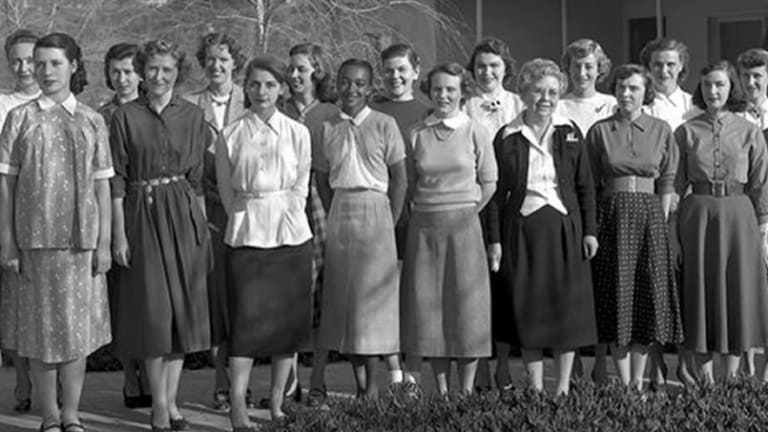February 8, 2020 - By As Black History Month continues throughout February, CalVet salutes the African American women who played and continue to play vital roles in the United States space program.
 (Left) Mary Jackson at Langley Laboratory.
(Left) Mary Jackson at Langley Laboratory.
Among them were the so-called “human computers” of the early aerospace days. Their calculations made manned space travel possible. These women incorporated elements including vehicle weight, the rocket’s lift capacity, and the orbital dynamics of the planets as they determined the rocket’s trajectories.
They experienced racism and sexism at the Langley Memorial Aeronautic laboratory in Virginia, which began recruiting African American women in the 1940s, but for many years kept their work areas separate from those of their white co-workers.
 (Right) Katherine Johnson
(Right) Katherine Johnson
Their story was explored in Margo Lee Shetterly’s 2016 book “Hidden Figures,” which later became a motion picture with the same title. Shetterly focused her efforts on Katherine Johnson, Dorothy Vaughan, and Mary Jackson, all of whom worked at the Langley laboratory.
Johnson earned the trust of astronaut John Glenn, who said before his Friendship 7 launch in 1962, “Have the girl check the numbers. If she says the numbers are good, I’m ready to go.” Johnson received the Presidential Medal of Freedom in 2015.
 (Left) UCLA graduate Janez Lawson, center, became the first African American woman to work at the Jet Propulsion Laboratory in Pasadena in the early 1950s.
(Left) UCLA graduate Janez Lawson, center, became the first African American woman to work at the Jet Propulsion Laboratory in Pasadena in the early 1950s.
Other African American women mathematicians and engineers made huge impacts on United States space travel as well. According to 2016 story in The Atlantic, when Janez Lawson graduated from UCLA with a chemical engineering degree in 1952, she found no jobs in her field available to women of her race or any other minority race. When she became the first African-American woman hired at the Jet Propulsion Laboratory in Pasadena, she carried not the title of engineer, but instead of “computer.” Her job? To master IBM’s new massive 701 computer, which she did.
“Despite the new technology, Lawson and her colleagues still did most of their work by hand,” The Atlantic story stated.
Annie Easley became a preeminent programmer at the Cleveland Flight Propulsion Laboratory in Ohio.
Jeanette Scissum, who joined the Marshall Space Flight Center in Huntsville, Alabama as an entry-level mathematician in 1964, developed the computer program that selected the flat spot at the Sea of Tranquility, where Apollo 11 landed for Neil Armstrong’s historic first walk on the moon in 1969.
Today, African American women hold key positions at NASA, from engineers to project and systems managers. Five have made journeys into space as astronauts.
They are “Hidden Figures” no more.
Source: CalVet








